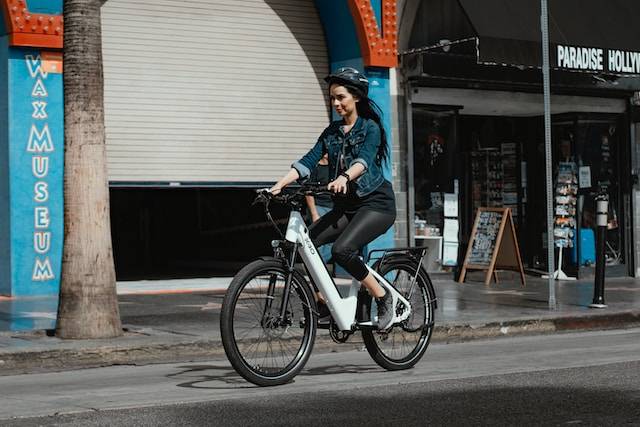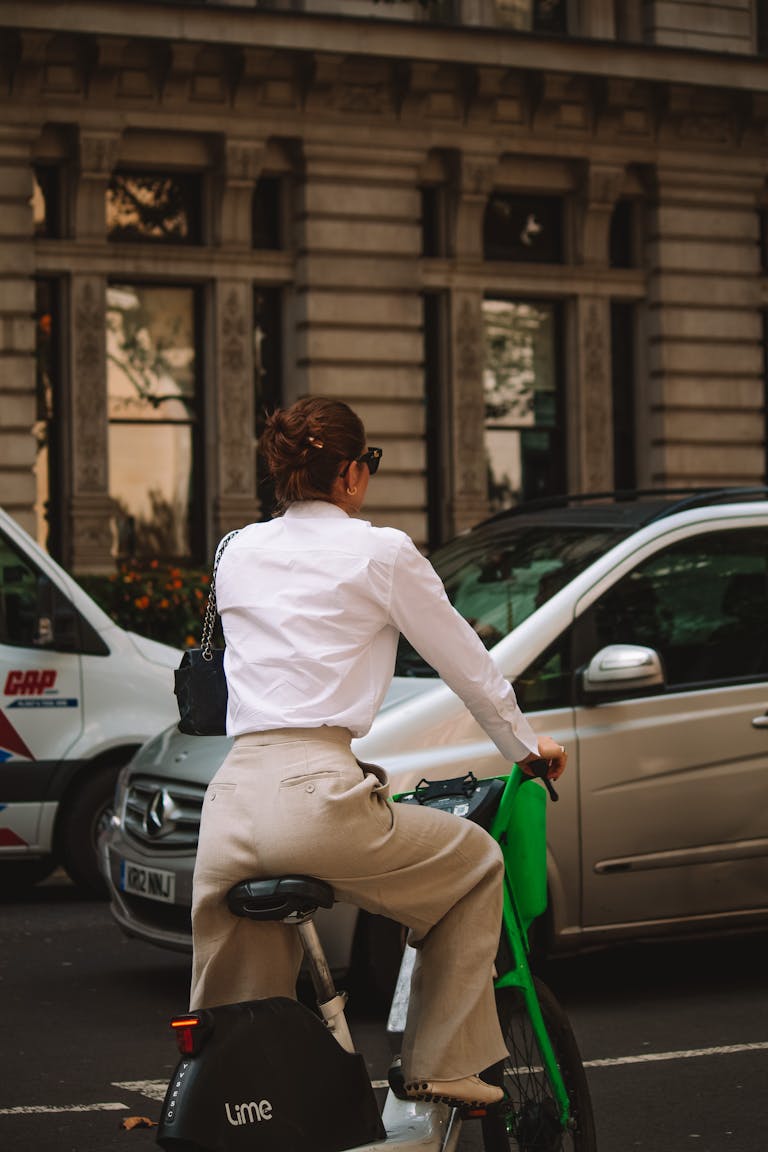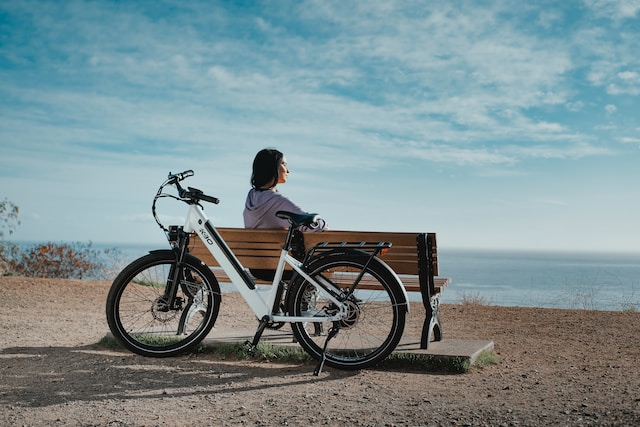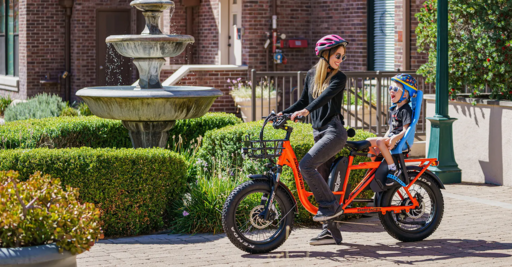Braking for Fall: How to Ensure Your E-Bike Stops Safely in Wet Weather
Last Updated on August 18, 2024 by Kristina Grant
The thrill of riding an electric bike (e-bike) is undeniable, but the joy can quickly turn to trepidation when faced with wet weather. Rain, fog, and even damp roads significantly impact riding conditions, posing unique challenges for e-bike riders. Among the most critical concerns is e-bike braking in wet weather. Improper braking can lead to accidents, injuries, and damage to your bike.
This guide delves into the intricacies of safe e-bike braking when conditions are less than ideal. We’ll explore how to maximize your e-bike’s stopping power, understand the nuances of different brake systems, and master essential riding techniques to navigate wet roads with confidence. By the end of this post, you’ll be equipped with the knowledge to confidently tackle your next wet weather commute or adventure.
Let’s dive in and ensure you’re braking for fall safely.
Understanding the Challenges of Wet Weather Riding
Riding an e-bike in wet conditions presents a unique set of challenges that require increased caution and skill. One of the most significant factors impacting safety is e-bike braking distance. Compared to dry conditions, stopping distances can dramatically increase due to reduced traction between the tires and the wet road surface. It’s crucial to anticipate this extended stopping time and adjust your riding style accordingly.
Another major hazard is hydroplaning. This occurs when a layer of water builds up between your tires and the road, causing a loss of traction and control. To minimize the risk of hydroplaning, avoid sudden braking and accelerating, and maintain a safe following distance behind other vehicles.
Tire pressure plays a vital role in ensuring optimal grip on wet roads. Proper tire pressure provides the necessary contact patch between the tire and the road surface, enhancing traction and stability. Underinflated tires can increase the risk of aquaplaning, while overinflated tires can reduce grip. Consult your e-bike’s owner manual for recommended tire pressure.
The road itself becomes a potential obstacle in wet weather. Wet leaves, standing water, and potholes can pose significant hazards. Exercise extra caution when riding over these surfaces, reducing speed and maintaining a firm grip on the handlebars.
Brake System and Maintenance
The type of brake system on your e-bike can significantly impact its performance, especially in wet conditions. Let’s break down the key differences.
Disc Brakes vs. Rim Brakes
- Disc brakes excel in wet weather. They offer superior stopping power by clamping down on a metal rotor, unaffected by water. This consistency in performance makes them the preferred choice for e-bike riders in rainy conditions.
- Rim brakes rely on friction between brake pads and the rim to slow the bike. While effective in dry conditions, their performance can deteriorate dramatically in wet weather, as water reduces friction and braking power.
RELATED CONTENT – 5 Reasons Why Electric Bike Riders Should Upgrade to Disc Brakes
Hydraulic vs. Mechanical Brakes
Both hydraulic and mechanical brakes can be used with disc brake systems.
- Hydraulic brakes provide exceptional stopping power and modulation through fluid-filled lines. They are less affected by weather conditions and offer a consistent braking feel.
- Mechanical brakes use cables to transmit braking force. While they are generally more affordable, they can be susceptible to cable stretch and reduced performance in wet weather due to water ingress.
Brake Pad Inspection and Replacement
Regular brake pad inspection is crucial for maintaining optimal braking performance, especially in demanding conditions like wet weather. Worn brake pads can significantly reduce stopping power and increase braking distance. Check your brake pads regularly for wear indicators or excessive thickness reduction. When brake pads reach their wear limit, replace them with a new set to restore braking efficiency.
Brake Lever Adjustment
Proper brake lever adjustment is essential for effective and safe braking. The brake lever should have enough free play to prevent accidental braking, but not too much that it compromises braking performance. Adjust the brake lever reach to suit your hand size and riding style. Additionally, ensure the brake levers are positioned correctly for comfortable and accessible braking.
Riding Techniques for Wet Conditions
Mastering the art of braking in wet weather is essential for safe e-bike riding. Let’s explore some techniques to help you navigate through the rain with confidence.
RELATED CONTENT
Beginner E-bike Riders
For those new to e-bike riding, mastering wet weather conditions requires patience and practice. Here are some basic tips:
- Reduce speed: Lower your speed to allow for increased stopping distances and better control.
- Smooth braking: Apply brakes gradually and progressively to avoid skidding.
- Look ahead: Scan the road for potential hazards like puddles, leaves, or slippery surfaces.
- Increase following distance: Maintain a larger gap between you and other vehicles to allow for extra braking time.
Experienced E-bike Riders
Experienced riders can refine their braking techniques for optimal performance in wet weather:
- Weight distribution: Shift your body weight slightly forward to improve traction and stability.
- Cornering: Reduce speed before entering corners and avoid sudden braking.
- Brake modulation: Use the front and rear brakes in combination for balanced braking.
- Practice: Regular practice in wet conditions will help you develop muscle memory and improve your skills.
Braking in Different Weather Conditions
The intensity of the rain can significantly impact riding conditions. Here are some specific tips:
- Rain: Reduce speed, increase following distance, and be cautious of standing water.
- Thunderstorms: Seek shelter if possible. If caught in a storm, prioritize visibility and avoid flooded areas.
- Fog: Use lights and reflective gear, reduce speed, and be extra cautious of other road users.
Emergency Braking
While it’s always best to avoid sudden stops, understanding how to brake effectively in an emergency can be lifesaving.
- Gradual application: Apply brakes progressively to avoid locking up the wheels.
- Weight distribution: Shift your body weight forward to help prevent a nosedive.
- Look ahead: Maintain a clear view of the road to anticipate potential hazards.
- Practice: Regular practice of emergency braking techniques can improve your reaction time.
E-bike Accessories for Wet Weather
Investing in the right accessories can significantly enhance your e-bike riding experience, especially in wet conditions. Let’s explore some essential items to keep you comfortable and safe.
Tires
The right tires can make a world of difference in wet weather. Opt for tires with a wet-weather tread pattern featuring deep grooves to channel water away and improve grip. Consider tires specifically designed for wet conditions or those with a knobby tread for added traction.
Fenders
Fenders are indispensable for protecting both you and your e-bike from the elements. They prevent water and mud splashes, keeping you dry and your bike clean. Invest in full-coverage fenders that extend over your tires to maximize protection.
Lights
Visibility is paramount in wet weather conditions. Ensure your e-bike is equipped with bright front and rear lights. Consider using lights with multiple modes, including flashing and steady, to increase your visibility to other road users.
Clothing and Gear
Dressing appropriately for wet weather is essential for staying comfortable and dry. Here are some clothing and gear suggestions:
- Waterproof jacket and pants: Invest in high-quality, breathable waterproof gear to protect yourself from rain.
- Cycling shoes: Opt for shoes with good drainage and consider waterproof covers.
- Gloves: Waterproof gloves will keep your hands dry and warm.
- Helmet: A helmet is essential for safety, and some models offer additional visibility features.
FAQs
Reduced braking distance, hydroplaning, compromised tire grip, and increased hazards like slippery leaves and potholes are some of the biggest challenges of riding an e-bike in wet weather.
Disc brakes offer superior stopping power and are less affected by water, making them ideal for wet weather riding. Rim brakes can experience reduced performance due to water reducing friction between the brake pads and the rim.
Hydraulic brakes provide more consistent braking power and are less susceptible to weather conditions compared to mechanical brakes, which can be affected by cable stretch and water ingress.
It’s crucial to regularly inspect your e-bike brake pads, especially before riding in wet weather. Look for wear indicators or excessive thinning, and replace them when necessary to maintain optimal braking performance.
For beginners, reducing speed, applying brakes smoothly and progressively, maintaining a safe following distance, and scanning the road ahead for potential hazards are key techniques for safe e-bike riding in wet conditions.
Experienced riders can improve their wet-weather braking by shifting weight forward for better traction, using a combination of front and rear brakes for balanced stopping, practicing cornering techniques at reduced speeds, and regularly practicing emergency braking maneuvers.
In rain, prioritize reducing speed and increasing following distance. During thunderstorms, seek shelter if possible and avoid flooded areas. When riding in fog, use lights and reflective gear, slow down significantly, and be extra cautious of other vehicles.
Conclusion
Riding an e-bike in wet weather can be challenging, but with the right knowledge and preparation, you can navigate through the rain with confidence and safety. By understanding the unique challenges posed by wet conditions, mastering essential braking techniques, and equipping yourself with the appropriate gear, you can significantly enhance your riding experience.
Remember, practice makes perfect. Gradually increase your exposure to wet weather riding to build your skills and confidence. Always prioritize safety over speed, and adjust your riding style accordingly.
External Sources
For more in-depth information on e-bike safety and maintenance, consider consulting resources like the League of American Bicyclists or your local bike shop.
Kristina Grant is not just an enthusiast but a true authority on electric bikes. Nestled in the coastal beauty of Virginia, Kristina has found the perfect backdrop for her passion for electric biking. As a dedicated wife and homeschooling mom, her life revolves around family, faith, and the thrill of adventure.
Originally hailing from Ohio, Kristina's journey with electric bikes began as a curiosity and quickly evolved into a deep expertise. Her blog is a testament to her love for electric biking, combining her fascination for eco-friendly transportation with her coastal lifestyle.
When she's not cruising the beach on her electric bike, you'll find Kristina indulging in her other loves: long walks along the shore, getting lost in a good book, and cherishing moments with her loved ones. With a heart as big as her love for animals, especially cats, Kristina brings a unique perspective to the electric bike world, grounded in her strong faith in God and her dedication to a sustainable lifestyle.
Through her blog, Kristina shares her extensive knowledge of electric bikes, offering valuable insights, tips, and recommendations to fellow enthusiasts. Whether you're a seasoned rider or a newcomer to the electric bike scene, Kristina's blog is your go-to source for all things electric biking, fueled by her passion, expertise, and the scenic beauty of coastal Virginia.







